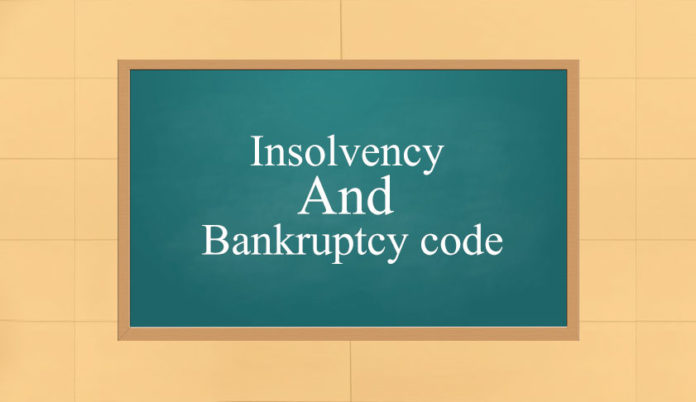
About Insolvency and Bankruptcy Code 2016
The insolvency and Bankruptcy Code, 2016 provides a framework for insolvency resolution of corporate persons in a time bound manner for maximisation of value of assets of such persons.
The provisions relating to corporate insolvency resolution process of the Code have come into force on 1st December, 2016.
In order to strengthen further the insolvency resolution process, it has been considered necessary to provide for prohibition of certain process from submitting a resolution plan who, on account of their antecedents, may adversely impact the credibility of the processes under the Code.
It is also considered necessary to make provisions to specify certain additional requirements for submission and consideration of the resolution plan before its approval by the committee of creditors.
The Code makes a clear distinction between insolvency and bankruptcy, the former is a short-term inability to meet liabilities during the normal course of business, while the latter is a longer term view on the business. As all businesses cannot succeed, it is perfectly normal for some businesses to fail, making it important to emphasize on corrective action.
The code amply clarifies that insolvency or bankruptcy is a commercial issue, backed by law to enforce transparency and objectivity. It is not another law behind which the inevitable can be delayed.
As per the BLRC, the Code set out the following objectives to resolve insolvency and bankruptcy:
1. Low time to resolution
2. Higher recovery
3. Higher Levels of debt financing a wide variety of debt instruments.
The Code ensures certainty in the process, including what constitutes insolvency, the processes to be followed to resolve the insolvency, and the process to resolve bankruptcy once it has been determined.
Such a framework can incentivize all stakeholders to behave rationally in negotiations toward the determination of viability, or in bankruptcy resolution. In turn, this will result in shorter recovery timeframes and better recovery, and greater certainty on lenders’ rights, leading to the development of a robust corporate debt market and unlocking the flow of capital.




